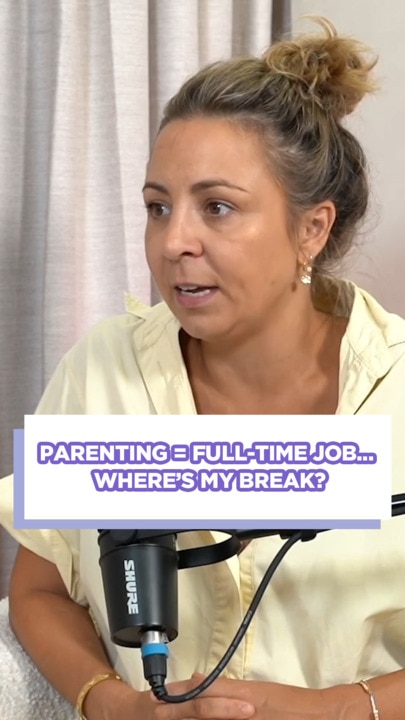A 'tradwife' isn't really 'traditional' at all
"There's nothing 'traditional' about having eight kids two years and apart and not having any sort of village."

Parenting
Don't miss out on the headlines from Parenting. Followed categories will be added to My News.
The “tradwife” lifestyle actually isn’t traditional, and it's about time we recognised that.
I totally get why so many folks hate the tradwife thing - because it doesn't make sense to them.
Loads of modern women see it as a step backward, especially with its focus on being a doormat to your husband and kids.
Want to join the family? Sign up to our Kidspot newsletter for more stories like this.
RELATED: This is how I’m able to be the breadwinner as a SAHM
As someone who's spent years fighting for gender equality, even hearing the term "tradwife" makes my blood boil.
But I’m not here to judge others.
And on the flipside, as someone who enjoys baking, backyard chickens, and retro clothing, I can (grudgingly) see the appeal of supposedly stepping off the treadmill for a bit.
What is a tradwife?
Short for “traditional wife,” the term popped up online in the 2010s, mostly in conservative internet circles. It tends to promote old-school gender roles: homemaking, submission, and a rejection of feminism, career ambition and sexual freedom.
Let’s be real though. A big part of its popularity comes down to aesthetics. The vintage dresses, the sourdough loaves, the tidy farmhouse kitchens — it all photographs beautifully and looks great on Instagram.
Still, behind the curated images lies a message that’s hard to stomach: domesticity is more “natural,” and therefore better. That message shames working mums and suggests that women who don’t embrace this lifestyle are somehow failing.
None of this is amazing. It’s also not where the “tradwife” ethos truly falls apart, though.

The real history of Motherhood
Elena Bridgers, a science writer and mum of two, studies hunter-gatherer societies. And she’s clear: “If you look at the history of motherhood and womanhood, starting way back in history, tradwifery has only existed for a tiny portion of humanity's existence.”
She explains in a social media post that for 95% of our time on Earth, humans lived as hunter-gatherers. In those communities, women typically had four children spaced years apart — not eight kids two years apart. And they sure as eggs didn’t raise them alone.
In these societies, Elena suggests, children were raised communally. “The typical ratio of available caregivers to dependent children in a traditional society is usually about 14 to one.”
Let that sink in for a moment. Fourteen people helping a mum raise one kid. That means mums weren’t stuck doing everything by themselves — help was constant and expected.

RELATED: Which would you choose SAHM or $200K
Been there. Built the Village.
I’m lucky to have something like that. On my street in Canberra, we jokingly call it “the commune” or “the kibbutz.” For years, five households shared meals, veggies, tools, moral support — and crucially, childcare.
A decade ago, I wrote about it . I still remember the line: “Not infrequently, Rachel teps outside and yells, ‘Who has got Ruby?’”
Rachel is my dear friend and beloved neighbour of more than a decade. Ruby is her daughter. These days Ruby is at uni, and my teens are the ones looking after the younger kids on the street.
Rach and I have always half-joked we were co-parenting. We’ll often say to each other, “I don’t think I could do this on my own! I always feel like I’m failing but you support and reassure me I’m not.”
For her, “the Commune” is crucial: “It’s about supporting each other, as well as the kids. We are stronger together.”
Elena Bridgers puts it best: “There's ample evidence to suggest that prior to the advent of agriculture, all adults, including mothers, spend half of their waking hours in leisure.”
Let that sink in. Leisure. Rest. Time. Support. Those are the true foundations of traditional motherhood.
So sure, if baking cookies in a prairie dress brings you joy, go for it. But don’t pretend the tradwife fantasy is rooted in history. It’s not. Real tradition was about community, not sacrifice.
As Elena says: “Take care of yourself. Get rest, get help, and don't have eight children two years apart.”
More Coverage
Originally published as A 'tradwife' isn't really 'traditional' at all




